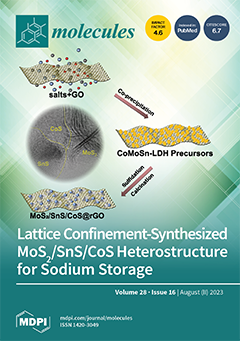Prostate-specific membrane antigen (PSMA)-based low-molecular-weight agents using beta(β)-particle-emitting radiopharmaceuticals is a new treatment paradigm for patients with metastatic castration-resistant prostate cancer. Although results have been encouraging, there is a need to improve the tumor residence time of current PSMA-based radiotherapeutics. Albumin-binding moieties have been used strategically to enhance the tumor uptake and retention of existing PSMA-based investigational agents. Previously, we developed a series of PSMA-based, β-particle-emitting, low-molecular-weight compounds. From this series,
177Lu-L1 was selected as the lead agent because of its reduced off-target radiotoxicity in preclinical studies. The ligand L1 contains a PSMA-targeting Lys-Glu urea moiety with an N-bromobenzyl substituent in the ε-amino group of Lys. Here, we structurally modified
177Lu-L1 to improve tumor targeting using two known albumin-binding moieties, 4-(
p-iodophenyl) butyric acid moiety (IPBA) and ibuprofen (IBU), and evaluated the effects of linker length and composition. Six structurally related PSMA-targeting ligands (Alb-L1–Alb-L6) were synthesized based on the structure of
177Lu-L1. The ligands were assessed for in vitro binding affinity and were radiolabeled with
177Lu following standard protocols. All
177Lu-labeled analogs were studied in cell uptake and selected cell efficacy studies. In vivo pharmacokinetics were investigated by conducting tissue biodistribution studies for
177Lu-Alb-L2–
177Lu-Alb-L6 (2 h, 24 h, 72 h, and 192 h) in male NSG mice bearing human PSMA+ PC3 PIP and PSMA− PC3 flu xenografts. Preliminary therapeutic ratios of the agents were estimated from the area under the curve (AUC
0-192h) of the tumors, blood, and kidney uptake values. Compounds were obtained in >98% radiochemical yields and >99% purity. PSMA inhibition constants (
Kis) of the ligands were in the ≤10 nM range. The long-linker-based agents,
177Lu-Alb-L4 and
177Lu-Alb-L5, displayed significantly higher tumor uptake and retention (
p < 0.001) than the short-linker-bearing
177Lu-Alb-L2 and
177Lu-Alb-L3 and a long polyethylene glycol (PEG) linker-bearing agent,
177Lu-Alb-L6. The area under the curve (AUC
0-192h) of the PSMA+ PC3 PIP tumor uptake of
177Lu-Alb-L4 and
177Lu-Alb-L5 were >4-fold higher than
177Lu-Alb-L2,
177Lu-Alb-L3, and
177Lu-Alb-L6, respectively. Also, the PSMA+ PIP tumor uptake (AUC
0-192h) of
177Lu-Alb-L2 and
177Lu-Alb-L3 was ~1.5-fold higher than
177Lu-Alb-L6. However, the lowest blood AUC
0-192h and kidney AUC
0-192h were associated with
177Lu-Alb-L6 from the series. Consequently,
177Lu-Alb-L6 displayed the highest ratios of AUC(tumor)-to-AUC(blood) and AUC(tumor)-to-AUC(kidney) values from the series. Among the other agents,
177Lu-Alb-L4 demonstrated a nearly similar ratio of AUC(tumor)-to-AUC(blood) as
177Lu-Alb-L6. The tumor-to-blood ratio was the dose-limiting therapeutic ratio for all of the compounds. Conclusions:
177Lu-Alb-L4 and
177Lu-Alb-L6 showed high tumor uptake in PSMA+ tumors and tumor-to-blood ratios. The data suggest that linker length and composition can be modulated to generate an optimized therapeutic agent.
Full article
 to open them.
to open them.





